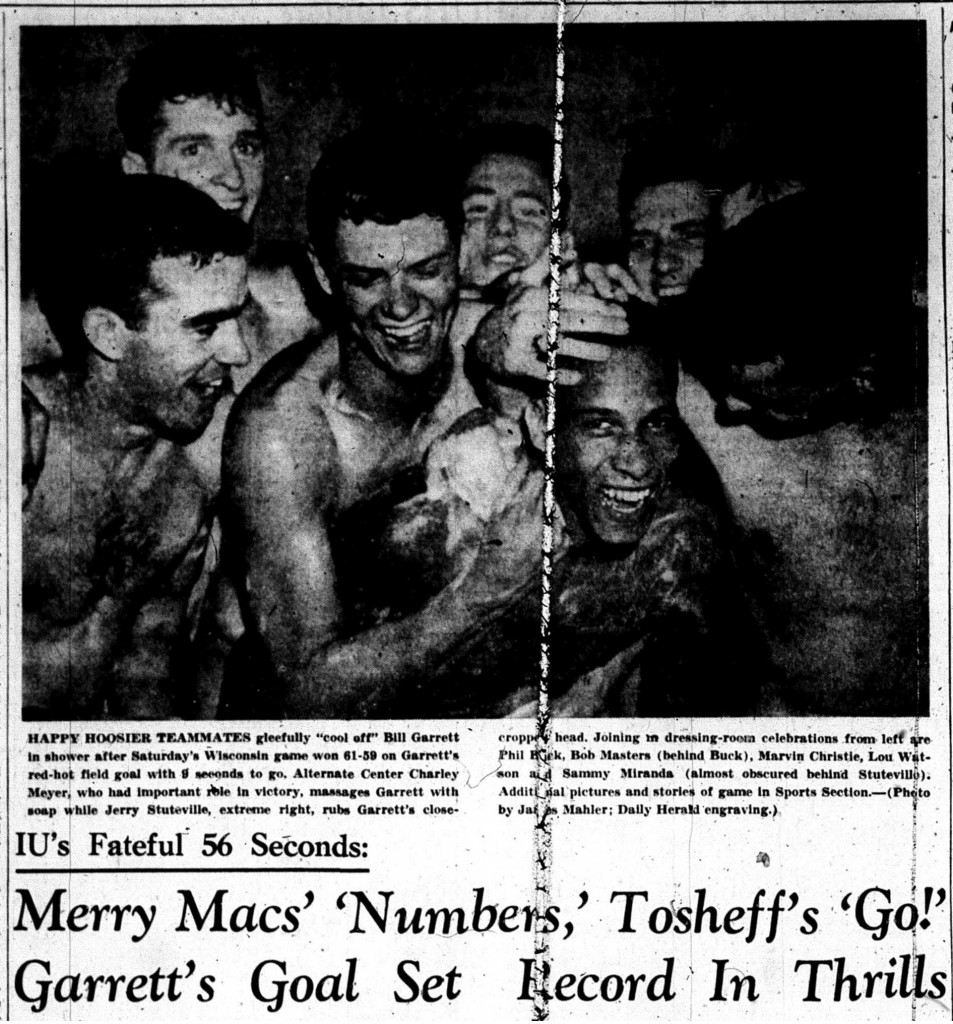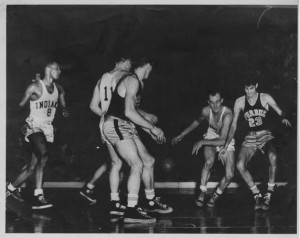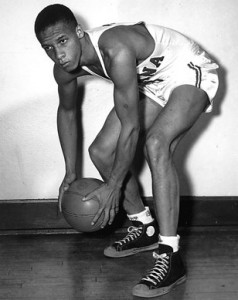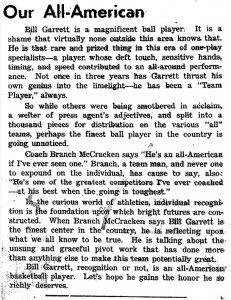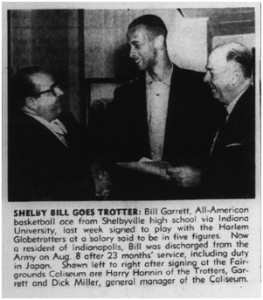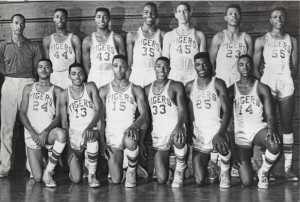
On April 8, 2017, the Indiana Historical Bureau, working alongside historical marker applicants Tom Graham and Bob Hammel, members of the Bill Garrett family, staff from Indiana University, and a host of others, helped unveil a new state marker honoring Hoosier basketball star Bill Garrett. The timing of the dedication and commemoration of this important athlete in IU and Big Ten history was most fitting, coming just days after the 2017 NCAA Men’s Basketball Championship game and two weeks after Crispus Attucks won the 2017 Indiana high school basketball state tournament. It was Attucks’ first state basketball title since Garrett coached the team to victory in 1959.
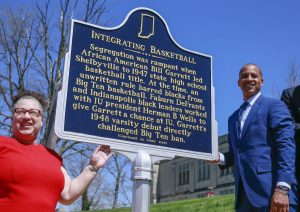
The marker celebrates Garrett’s accomplishments as a player and coach, while also commemorating some of the men who helped him break the longstanding “gentleman’s agreement,” which barred African Americans from playing on Big Ten varsity basketball teams into the late 1940s.
On April 19, 2017, IHB is honored to dedicate a new state historical marker to commemorate another Hoosier hardwood hero, IU basketball player and coach Branch McCracken, who also had the distinction of coaching Garrett at IU from 1948-1951.
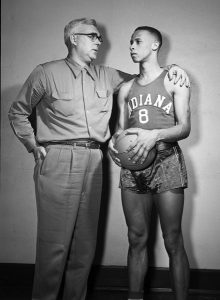
Emmett Branch McCracken was born in Monrovia in Morgan County, Indiana on June 9, 1908 to Charles and Ida McCracken. He attended Monrovia schools and became a star on his high school basketball team, leading the small town school to consecutive Tri-State Tournament championships in 1925 and 1926. The Tri-State Tournament was an annual basketball tournament played in Cincinnati between high school teams from Indiana, Ohio, and Kentucky. In 1925, the Muncie Star Press reported that fourteen of the fifty-three teams entered in the tournament that year were from Indiana, with Anderson, Columbus, and Logansport considered favorites. Not surprisingly, the Logansport Pharos-Tribune favored Logansport High School, coached by Cliff Wells, as “a leading contender for the title.” However, Logansport would lose in the semifinal game to Aurora High School, which McCracken’s Monrovia team would then defeat in the final, 29-21. After six consecutive victories, Monrovia had earned the title of Tri-State Tournament champion. Tournament officials selected McCracken on the mythical All Tri-State Team, a testament to the skills he exhibited during the tournament.
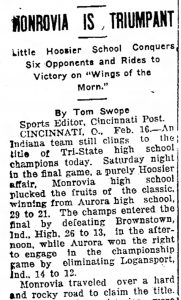
Monrovia returned to the tournament the following year as one of twelve Indiana teams to compete. The team won for the second year in a row, defeating Summitville High School (Indiana) in the final game, 19-17. In a December 1927 article, the Richmond Item reported that Monrovia’s high ranking during the 1926 tournament “was largely due to the playing of McCracken,” captain of Monrovia’s team. McCracken won highest individual honors for a player during the 1925 and 1926 Tri-State Tournaments when he received the medal for most valuable player both years. The Logansport Pharos-Tribune praised McCracken’s play in its February 27, 1926 issue, reporting that he had not only led the offense, but that he was also “the bulwark of the Monrovia defense.” According to the paper, “The star pivot player gave one of the best exhibitions of basketball displayed by any individual player here this season.”
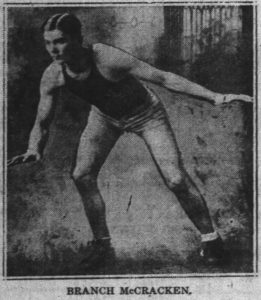
After completing his senior year at Monrovia, McCracken entered Indiana University in the fall of 1926. In early November 1927, the Indianapolis Star reported that he was one of the chief candidates for the center position on IU’s basketball team for the upcoming season. His position on the varsity football team prevented him from joining basketball practice though until after November 19. After just a few games, the Star reported on December 18: “The first new man to come through with promise is Branch McCracken of Monrovia.”
McCracken may not have had much Big Ten basketball experience at the time, but he was already beginning to excel under Coach Everett Dean. On New Year’s Eve 1927, IU played the University of Cincinnati and defeated them, 56-41. An article in the Cincinnati Enquirer the following day noted that McCracken “was high point man along with [Dale] Wells, the two accounting for 28 of Indiana’s points by virtue of their accurate shooting from various angles of the court.” The following game, IU defeated fellow Big Ten member the University of Chicago, 32-13. In this game, McCracken showed his true potential. According to IU yearbook, The Arbutus, he “became at once a hero and a marked man,” having scored 24 of the team’s 32 points. The Star also took note, writing: “With the Hoosier victory came a new Indiana star on the horizon in Branch McCracken . . . The Indiana sophomore scored eleven more points than the entire Chicago team.”
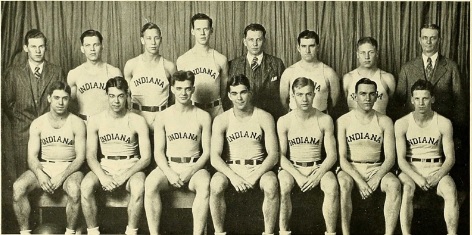
McCracken continued to be a strong presence on the court throughout the 1927-1928 season. Despite his youth, he was the high scorer for the Hoosiers and led the Big Ten Conference in scoring during most of the year, only losing the lead to Bennie Oosterbaan of Michigan in the last few weeks of the season. McCracken finished the season tied for second place in conference scoring. In late November, he again turned in his football jersey to join the basketball squad for the 1928-1929 season. He returned as center and continued to put up big points, again finishing second in Big Ten scoring as a sophomore.
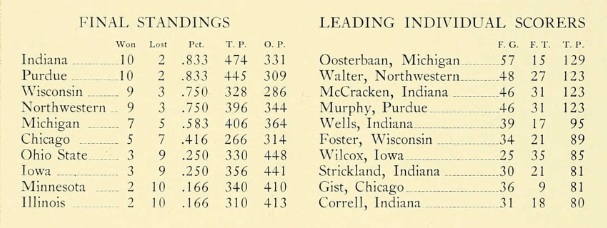
McCracken’s junior season in 1929-1930 would prove to be his best. According to IU’s yearbook The Arbutus:
After three years of hard struggle Capt. Branch McCracken plowed his way through the Conference foes to score a total of 147 points to top all other players and to break the all-time record set last year by [Charles ‘Stretch’] Murphy of Purdue. McCracken was one of the best pilots ever in charge of an Indiana basketball team and was named on nearly every all-conference team.
McCracken graduated from IU in 1930 and soon after accepted a position as head basketball coach at Ball State Teachers College (now Ball State University). An article in the Columbus Republic in 1938 noted that during his time coaching the Ball State Cardinals, he made them “a constant threat in Indiana collegiate conference competition,” leading them to an 86-57 record over eight seasons.
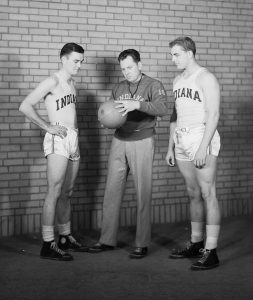
In late spring 1938, newspapers began reporting that IU basketball and baseball coach Everett Dean was close to accepting a basketball coaching position at Stanford University. McCracken, who had played under Dean at IU, was among those considered to replace the future Naismith Basketball Hall of Famer. By June, IU hired McCracken as the school’s head basketball coach.
McCracken coached the Hoosiers to a 17-3 record in his first year with the team. It was a strong season, but one that would be eclipsed quickly the following year. McCracken’s squad finished the 1939-1940 regular season 20-3. Despite finishing second in the Big Ten, one game behind Purdue, IU was invited to represent the Midwest in the National Collegiate Athletic Association’s Eastern tournament. IU had won all of its non-conference games and beat Purdue twice, while the Boilermakers had lost two non-conference games, bringing their total losses to four on the season.
On March 22, IU defeated Springfield College (Massachusetts), 48-24 in the first round of the Eastern tournament. The following day, the team topped Duquesne University, 39-30, earning the opportunity to play the “Phog” Allen coached University of Kansas team for the national college basketball championship. McCracken’s Hoosiers defeated Kansas 60-42 to claim IU’s first national basketball championship. In expressing his pride and congratulations to the team, IU President Herman B Wells told the squad “the game which you played at Kansas City was to the glory of yourselves, to Indiana basketball, and to Indiana University.”
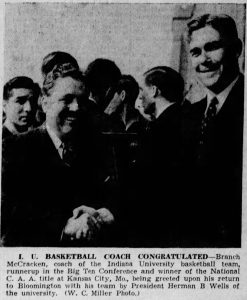
In just his second season at the helm, McCracken led IU to their first national title, setting the bar high for the seasons to come. He would not let the school nor the state down. After a three-year break (1943-1946) to serve in the United States Navy, McCracken returned to his alma mater ready to resume his coaching responsibilities and again lead the Hoosiers to victory.
After starting the 1952-1953 season with a 1-2 record, McCracken’s team would go on to win its next seventeen straight games. By mid-January the United Press board of coaches ranked them fifth in the country. On February 23, 1953, IU trampled Purdue 113-78. According to the Indianapolis Star, IU’s 113 points in the game broke the previous Big Ten record of 103 set by the University of Iowa in 1944. By March 1, the Hoosiers were guaranteed sole claim to the Big Ten title after defeating Illinois, 91-79.
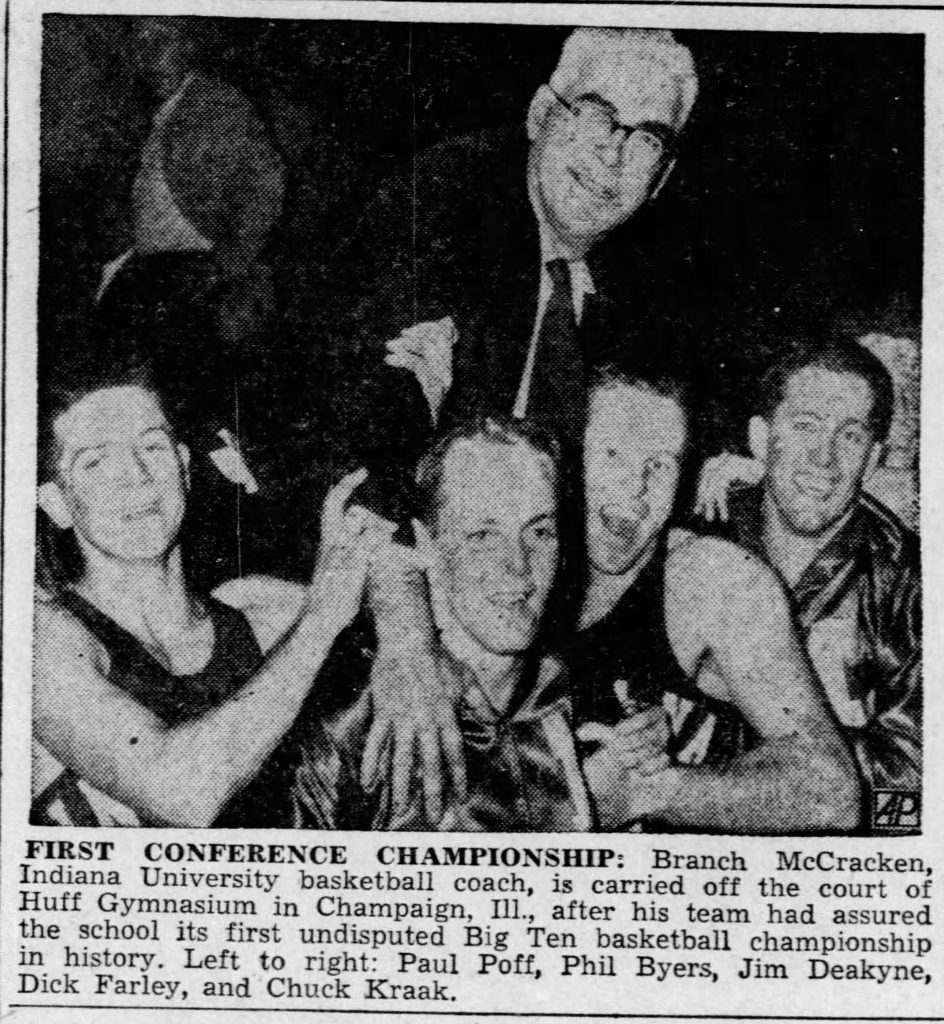
By the end of the regular season, Indiana’s record was 19-3, with seventeen conference wins to one loss. The team defeated DePaul University, the University of Notre Dame, and Louisiana State University, in the postseason, earning the chance to play Kansas once again for the national championship on March 18. With thirty seconds remaining in the title game, Bob Leonard of the Hoosiers made his second of two free throws to give IU a 69-68 lead and their second national basketball title.
McCracken’s team won the Big Ten conference again the following year and twice more under him in 1957 and 1958. In 1960, he was enshrined in the Naismith Memorial Basketball Hall of Fame as a player. The Indianapolis Star reported on the induction on April 27, 1960, noting that “Purdue and Indiana had hit the jackpot.” Three of the five men inducted as players were from the two universities: Charles (Stretch) Murphy and Johnny Wooden from Purdue, and McCracken from IU. Ward (Piggy) Lambert of Purdue was also one of the three coaches inducted that year.
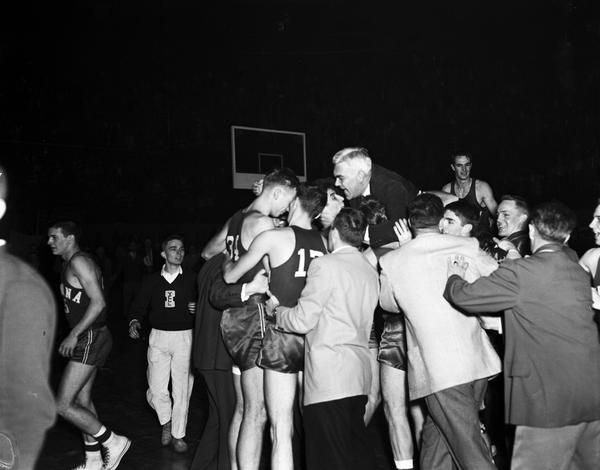
In 1965, after twenty-four seasons, McCracken retired as head coach of IU’s varsity basketball team. Between his thirty-two years at Ball State and IU, his teams had amassed a 450-231 record (66% win percentage), complete with two NCAA titles, and four Big Ten titles. Reflecting on his experiences as coach, McCracken stated:
I’ve never regretted my profession. Taking kids and helping to make something out of them is the most rewarding part of my job. Basketball has been good to me. It’s made me lots of friends and I owe the game more than I can ever repay.

